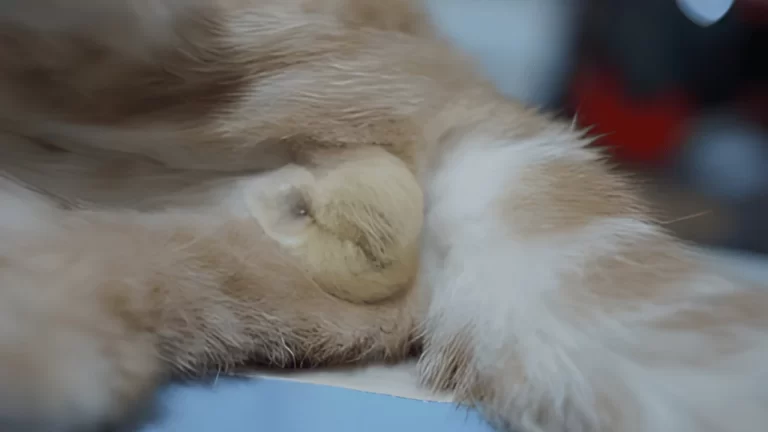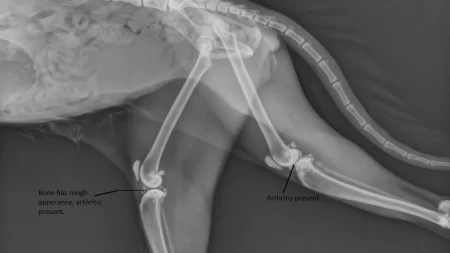Yes, cats have testicles, but sometimes they are not visible or palpable. This condition is called cryptorchidism, which means that one or both testicles have not descended into the scrotum. Cryptorchidism is a common congenital abnormality in cats, especially in certain breeds. It can affect the health and fertility of the cat, as well as the sex determination.
In this article, we will explain what cryptorchidism is, what causes it, how it is diagnosed, and what are the treatment options. We will also give some tips on how to tell the sex of a cat by looking for physical differences and checking for testicles.
Understanding Cryptorchidism in Cats
What is it?
Cryptorchidism is a condition where one or both testicles fail to descend from the abdomen into the scrotum. Normally, the testicles of male cats descend by the time they are 6 to 8 weeks old. However, in some cases, the testicles may remain in the abdomen or in the inguinal canal (the passage between the abdomen and the scrotum). This can affect the development and function of the testicles, as well as the production of hormones and sperm.
Causes and Prevalence
The exact cause of cryptorchidism is not known, but it is believed to be influenced by genetic and environmental factors. Cryptorchidism is more common in certain breeds of cats, such as Persians, Himalayans, Siamese, and Burmese. It is also more likely to occur in cats that are inbred, have other congenital defects, or are exposed to high temperatures or toxins during fetal development. Cryptorchidism can affect either one or both testicles, but the right testicle is more often affected than the left. The prevalence of cryptorchidism in cats ranges from 1% to 3%, depending on the breed and the study.
Diagnosis
Cryptorchidism can be diagnosed by a physical examination, where the veterinarian will try to locate and palpate the testicles. However, sometimes the testicles may be too small or too deep to be felt. In that case, the veterinarian may use other methods, such as ultrasound, blood tests, or hormone injections, to confirm the diagnosis. Ultrasound can help visualize the testicles and their location. Blood tests can measure the levels of testosterone and other hormones, which may be lower or higher than normal in cryptorchid cats. Hormone injections can stimulate the testicles to produce more testosterone and cause them to descend if they are still capable of doing so.
Treatment Options for Cryptorchidism
Neutering
The most common and recommended treatment for cryptorchidism is neutering, which means surgically removing the testicles. Neutering has several benefits for the cat, such as preventing unwanted pregnancies, reducing the risk of testicular cancer and other diseases, and decreasing the tendency to roam, fight, spray, or mark territory. Neutering also eliminates the possibility of passing on the cryptorchid gene to the offspring. Neutering can be done as early as 8 weeks of age, or as soon as the diagnosis is confirmed. The procedure is more complicated and expensive than normal neutering, as it involves opening the abdomen or the inguinal canal to find and remove the testicles.
Other Options
If neutering is not an option, for example, if the cat is intended for breeding or showing, there may be other alternatives, such as hormone therapy or surgery. Hormone therapy involves giving the cat injections of human chorionic gonadotropin (hCG) or gonadotropin-releasing hormone (GnRH), which may stimulate the testicles to descend. However, this method is not very effective, as it only works in a small percentage of cases, and it may have side effects, such as increased aggression or prostate problems. Surgery involves manually moving the testicles from the abdomen or the inguinal canal into the scrotum, and fixing them in place with sutures. However, this method is also not very reliable, as it may not improve the function of the testicles, and it may cause complications, such as infection, bleeding, or recurrence.
How to Tell the Sex of a Cat
Physical Differences Between Male and Female Cats
One of the easiest ways to tell the sex of a cat is to look for physical differences between male and female cats. Male cats tend to be larger, heavier, and more muscular than female cats. They also have a broader head, a thicker neck, and a longer tail. Female cats tend to be smaller, lighter, and more slender than male cats. They also have a narrower head, a thinner neck, and a shorter tail. However, these differences may not be very noticeable in young kittens, or in cats that are neutered or spayed.
Checking for Testicles
Another way to tell the sex of a cat is to check for the presence or absence of testicles. Male cats have two testicles that are located in the scrotum, which is a pouch of skin between the anus and the penis. The scrotum is usually visible and palpable in male cats, especially after they reach puberty, which is around 6 months of age. Female cats do not have testicles, but they have two nipples on each side of the vulva, which is the opening of the reproductive tract. The vulva is usually hidden by a fold of skin, but it can be exposed by gently lifting the tail. However, checking for testicles may not be very accurate in cases of cryptorchidism, as the testicles may not be in the scrotum, or they may be too small to be detected.
Other Methods for Sexing Cats
If the physical differences and the testicles are not enough to determine the sex of a cat, there may be other methods that can help, such as DNA testing, behavior observation, or color patterns. DNA testing involves taking a sample of the cat’s blood, saliva, or hair, and sending it to a laboratory for analysis. The DNA test can reveal the sex chromosomes of the cat, which are XX for females and XY for males. Behavior observation involves watching the cat’s behavior and looking for signs of gender-specific traits, such as spraying, mounting, or vocalizing. However, these behaviors may not be very reliable, as they may vary depending on the cat’s personality, environment, or hormonal status. Color patterns involve looking at the cat’s coat color and markings, and identifying the ones that are linked to the sex of the cat. For example, tortoiseshell and calico cats are almost always female, while orange tabby cats are more likely to be male. However, these patterns may not be very conclusive, as they may be affected by genetic mutations or rare exceptions.







